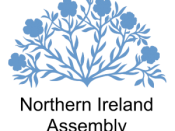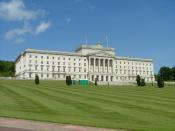"The history of a legal system is inevitably linked to the political history of the territory where the legal system has operated. For that reason alone the legal history of Northern Ireland is long and complex." Law formed a very important factor both in public and private life in ancient Ireland. Early Irish society was hierarchical in character. It was governed by the Brehon law, however it was somewhat disturbed in 1169 by the Anglo-Norman invasions. The Catholic encyclopedia states that "Brehon law is the usual term for Irish native law, as administered in Ireland down to almost the middle of the seventeenth century, and in fact amongst the native Irish until the final consummation of the English conquest. It derives its name from the Irish word Breitheamh (genitive Breitheamhan, pronounced Brehoon or Brehon) which means a judge." This was a legal system based on patriotic customs and traditions.
Brehon law did continue to apply after 1169 in areas which were not controlled by Anglo-Norman invasions and where the native population retained the ability to govern society by these traditional means.
The Normans at that time were subject to the English common law. "The common law originally developed under the auspices of the adversarial system in historical England from judicial decisions that were based in tradition, custom, and precedent." The essence of the common law was that it was made by judges sitting in courts, applying their common sense and knowledge of legal precedent to the fact before them. Due to the fact that common law consisted of using what had gone before as a guide, it places great emphasis on precedents. As the Norman's extended their influence, English law became increasingly influential in Ireland and by 1300 it had been constituted throughtout the country. "In some thirty years later...


